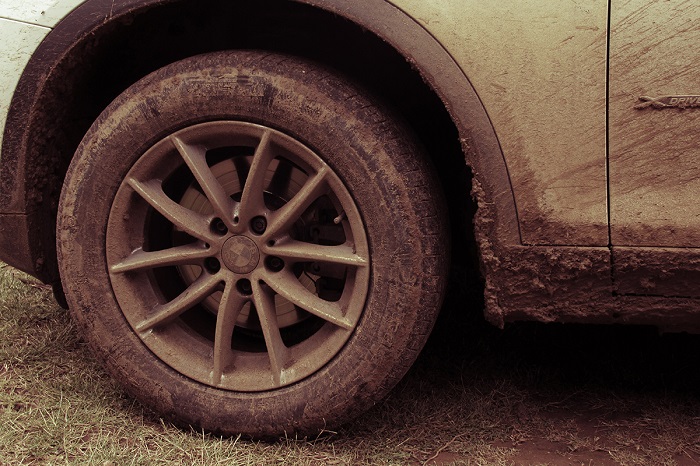EarthTalk®
From the Editors of E – The Environmental Magazine

Tire particles & other non-exhaust emissions constitute the majority of fine particulate emissions as a result of auto travel on U.S. roads. Credit: pexels.com.
Dear EarthTalk: What happens to all the rubber waste that wears off tires as cars and trucks roll down the road? Is it bad for the environment? — Jack C., Marion, OH
Most people have heard of exhaust emissions, but there is another form of emissions released by vehicles known as non-exhaust emissions (NEEs). According to independent testing and data firm Emissions Analytics, they can be as much as 1,000 times worse for the environment. NEEs are defined as “particles released into the air from brake wear, tyre wear, road surface wear and resuspension of road dust during on-road vehicle usage.”
Unfortunately, NEEs account for most of the primary particulate matter released by road vehicles on a daily basis. In total, more than 1.5 million metric tons of tire-wear particles are lost to the environment each year, equivalent to 30 percent of the weight of every tire used in the U.S. NEEs constitute as much as 60 percent of the particles that are less than 2.5 micrometers in size (PM2.5) and 73 percent of those that are less than 10 micrometers in size (PM10), making them one of the greatest vehicular threats to nature.
This is only further exacerbated by the growing electric-vehicle industry, as EV’s weigh significantly more due to their batteries and also have a higher torque output.
Putting these two characteristics together, tires used on an EV will inevitably wear out faster.
According to Scott Clark, Michelin executive vice president for automotive, motorsport experiences and Americas Regions, the difference in tire life-span can be as much as 20 percent less for an EV compared to an internal combustion engine vehicle.
As for the effects that NEEs have on the environment, the data is unsettling to say the least.
In a study on estuary ecosystems led by post-doctoral scholar Samreen Siddiqui, it was found that Inland Silverside and mysid shrimp, when exposed to tire particulates and a resultant pollutant known as leachate (a mix of chemicals that are released by tire particulates) had a number of problems, including significantly altered swimming behaviors and reduced growth.
In a similar study led by graduate student Brittany Cunningham, a freshwater ecosystem was exposed to tire particulates and leachates. The organisms in question—embryonic zebrafish and the crustacean Daphnia magna—experienced mortality and developmental abnormalities as a result of the exposure.
Leachate was considered the main driver of toxicity in both organisms, with the particles themselves enhancing the toxicity in comparison to the leachate alone.
The researchers recommended some innovative solutions to preventing tire-wear exposure, including rain gardens on the sides of roads to capture tire particulates, as well as more durable tires, incentivizing greener transit alternatives, and something known as particle capture devices.
The Tyre Collective, a research group that produces sustainable devices for tire-particulate removal, invented a device that is capable of capturing the particulates themselves. Since the particulates become positively charged when released due to friction, the device uses electrostatic plates to capture as much as 60 percent of the particles released, preventing them from ever entering the environment!
CONTACTS:
Emissions Analytics, emissionsanalytics.com
Tire Dust Is Pollution, greencarreports.com/news/1129809_tire-dust-is-pollution-and-this-invention-will-help-vehicles-clean-up-as-they-go
Why Don’t Tires Last as Long on an EV? cleanfleetreport.com/tech-why-dont-tires-last-as-long-on-an-ev/
EarthTalk® is produced by Roddy Scheer & Doug Moss for the 501(c)3 nonprofit EarthTalk.
See more at https://emagazine.com
To donate, visit https://earthtalk.org
Send questions to: question@earthtalk.org
